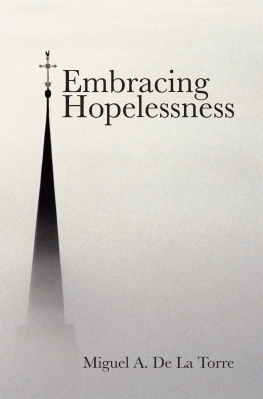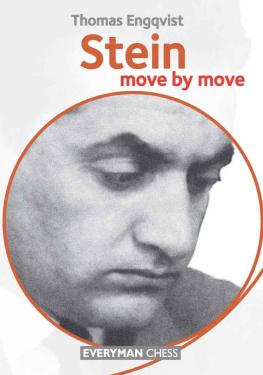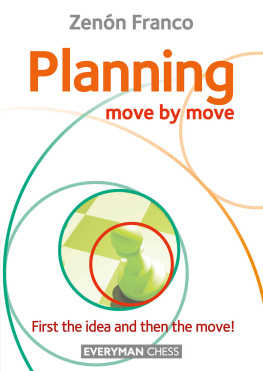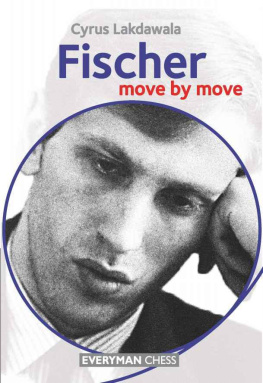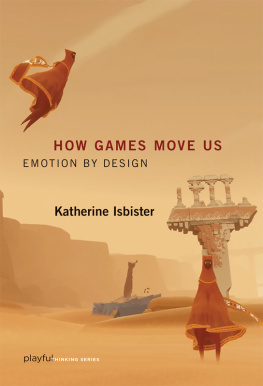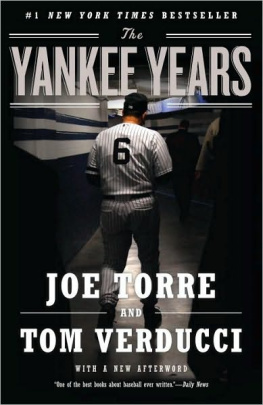
First published in 2012 by Gloucester Publishers Limited, Northburgh House,
10 Northburgh Street, London EC1V 0AT
Copyright 2012 Richard Palliser
The right of Richard Palliser to be identified as the author of this work has been
asserted in accordance with the Copyrights, Designs and Patents Act 1988.
All rights reserved. No part of this publication may be reproduced, stored in a
retrieval system or transmitted in any form or by any means, electronic,
electrostatic, magnetic tape, photocopying, recording or otherwise,
without prior permission of the publisher.
British Library Cataloguing-in-Publication Data
A catalogue record for this book is available from the British Library.
ISBN: 978 1 85744 923 5
Distributed in North America by The Globe Pequot Press, P.O Box 480,
246 Goose Lane, Guilford, CT 06437-0480.
All other sales enquiries should be directed to Everyman Chess, Northburgh House,
10 Northburgh Street, London EC1V 0AT
tel: 020 7253 7887 fax: 020 7490 3708
email: info@everymanchess.com; website: www.everymanchess.com
Everyman is the registered trade mark of Random House Inc. and is used in this work under licence from Random House Inc.
Everyman Chess Series
Chief advisor: Byron Jacobs
Commissioning editor: John Emms
Assistant editor: Richard Palliser
Typeset and edited by First Rank Publishing, Brighton.
Cover design by Horatio Monteverde.
Contents
1 The ... g6 Torre: Lines with ... d5
Series Foreword
Move by Move
is a series of opening books which uses a question-and-answer format. One of our main aims of the series is to replicate - as much as possible - lessons between chess teachers and students.
All the way through, readers will be challenged to answer searching questions and to complete exercises, to test their skills in chess openings and indeed in other key aspects of the game. Its our firm belief that practising your skills like this is an excellent way to study chess openings, and to study chess in general.
Many thanks go to all those who have been kind enough to offer inspiration, advice and assistance in the creation of Move by Move . Were really excited by this series and hope that readers will share our enthusiasm.
John Emms
Everyman Chess
Bibliography
Books
Beating the Anti-Kings Indians , Joe Gallagher (Batsford 1996)
Chess Openings for Black, Explained , Lev Alburt, Roman Dzindzichashvili & Eugene Perelshteyn (CIRC 2005)
Dealing with d4 Deviations , John Cox (Everyman Chess 2005)
Declining the Queens Gambit , John Cox (Everyman Chess 2011)
Fighting the Anti-Kings Indians , Yelena Dembo (Everyman Chess 2008)
How to Succeed in the Queen Pawn Openings , John Watson & Eric Schiller (Trafford 2006)
Nunns Chess Openings , John Nunn, Graham Burgess, John Emms & Joe Gallagher (Everyman Chess 1999)
Play 1 d4! , Richard Palliser (Batsford 2003)
Play the Queens Indian , Andrew Greet (Everyman Chess 2009)
Starting Out: d-pawn Attacks , Richard Palliser (Everyman Chess 2008)
The Complete Torre Attack , Eric Tangborn (International Chess Enterprises 1993)
The Gambit Guide to the Torre Attack , Graham Burgess (Gambit 1999)
The Kaufman Repertoire for Black and White , Larry Kaufman (New in Chess 2012)
The New Old Indian , Alexander Cherniaev & Eduard Prokuronov (Everyman Chess 2011)
The Road to Chess Improvement , Alex Yermolinsky (Gambit 2000)
Trompowski Opening and Torre Attack , Robert Bellin (Batsford 1983)
Winning with the Torre Attack , Eduard Gufeld & Oleg Stetsko (Batsford 1993)
Other Resources
Annoying White d-pawn Openings
, Andrew Martin (Grandmaster Videos 1996)
CHESS
Chess Informant
ChessPublishing.com
ChessVibes.com
Mega Database 2011 (ChessBase)
The Week in Chess
Torre Attack , Nigel Davies (ChessBase 2008)
UltraCorr 3a (Chess Mail)
Introduction
The Torre Attack in its traditional guise, 1 d4 Nf6 2 Nf3 e6 3 Bg5 , is an excellent way for the d-pawn player to avoid the complexities of the Nimzo-Indian. Especially at club level White often reaches an easy-to-play position where he enjoys decent attacking prospects. In such positions, with Black generally committed to an early ... d5, knowledge of the key motifs for each side is much more important than memorizing specific theoretical sequences. Thats not to say that the Torre doesnt have its sharp and quite critical lines, but there is certainly much less to know than if White ventures an early c2-c4.
Sometimes the Torre is tagged with unflattering terms like dull, but one will find plenty of exciting games in this work. I certainly cant believe that too dull an opening would have been used throughout his career by the strong Russian Grandmaster Alexey Dreev, nor by those two leading modern day knights of the opening, the Indian Grandmasters Pentala Harikrishna and Krishnan Sasikiran, who have built on the earlier Torre efforts by the likes of Tigran Petrosian and Boris Spassky. Whites simple set-up might be quite solid, but Black underestimates it and Whites chances to seize a middlegame initiative at his peril.
Notably all five of those aforementioned players have employed the Torre not just in its traditional form, but also against 2 ... g6. Ive long felt that the Torre is underestimated by Kings Indian and Grnfeld players and that White has much better chances for an edge in the main lines after 2 ... g6 3 Bg5 than theory has often thought. Just like after 2 ... e6, Black can equalize, but he needs to know his stuff and may not find the main lines the guarantee of an easy life he had perhaps hoped.
The Move by Move format is ideal for explaining the intricacies of an opening like the Torre. This book is not crammed full of theory, but there should still be plenty of detail for even the stronger club player and above. The aim has been to provide a good balance between coverage of the relatively more theoretical positions and an explanation of the key manoeuvres for both sides. Unlike in many opening works, however, the notes do not begin to gradually peter out once past the opening stage of each illustrative game. Indeed, I hope that each of our 25 illustrative games will provide an instructive lesson in middlegame and sometimes even endgame play, with the Questions and Exercises often highlighting particularly important points.
Question: I understand that well be looking at 3 Bg5 after both 2 ... e6 and 2 ... g6, but can we not play the opening against everything?
Answer: Unfortunately, thats a common misconception. As well see in our final chapter, White can most certainly meet 1 d4 Nf6 2 Nf3 b6 and 2 ... d6 with 3 Bg5, but I do not really recommend it after 2 ... d5. White hopes for 3 ... e6, transposing to his favourite line, but unfortunately 3 ... Ne4! is a bit of a problem. As such, Im afraid that after 1 d4 d5 2 Nf3 Nf6 White should play 3 c4 or, if he prefers a systems-based approach, 3 Bf4 or 3 e3.
The Torre only really works with a knight on f6, so is not ideal either against the likes of the Modern (1 ... g6 and 2 ... Bg7), and 1 d4 Nf6 2 Nf3 c5 is another approach which casts significant doubt on the view of the Torre as a complete opening. Clearly 3 Bg5 cxd4, breaking up Whites pawn centre, is not ideal and neither is the preparatory 3 c3 going to suit everyone, with 3 ... cxd4 4 cxd4 d5, taking play into the Exchange Slav, one problem. One really does better just to learn 3 d5, as covered in, amongst other works, Aaron Summerscales A Killer Chess Opening Repertoire .
Question: It seems like we wont be getting the Torre all that often. Is it really such a good practical choice?


